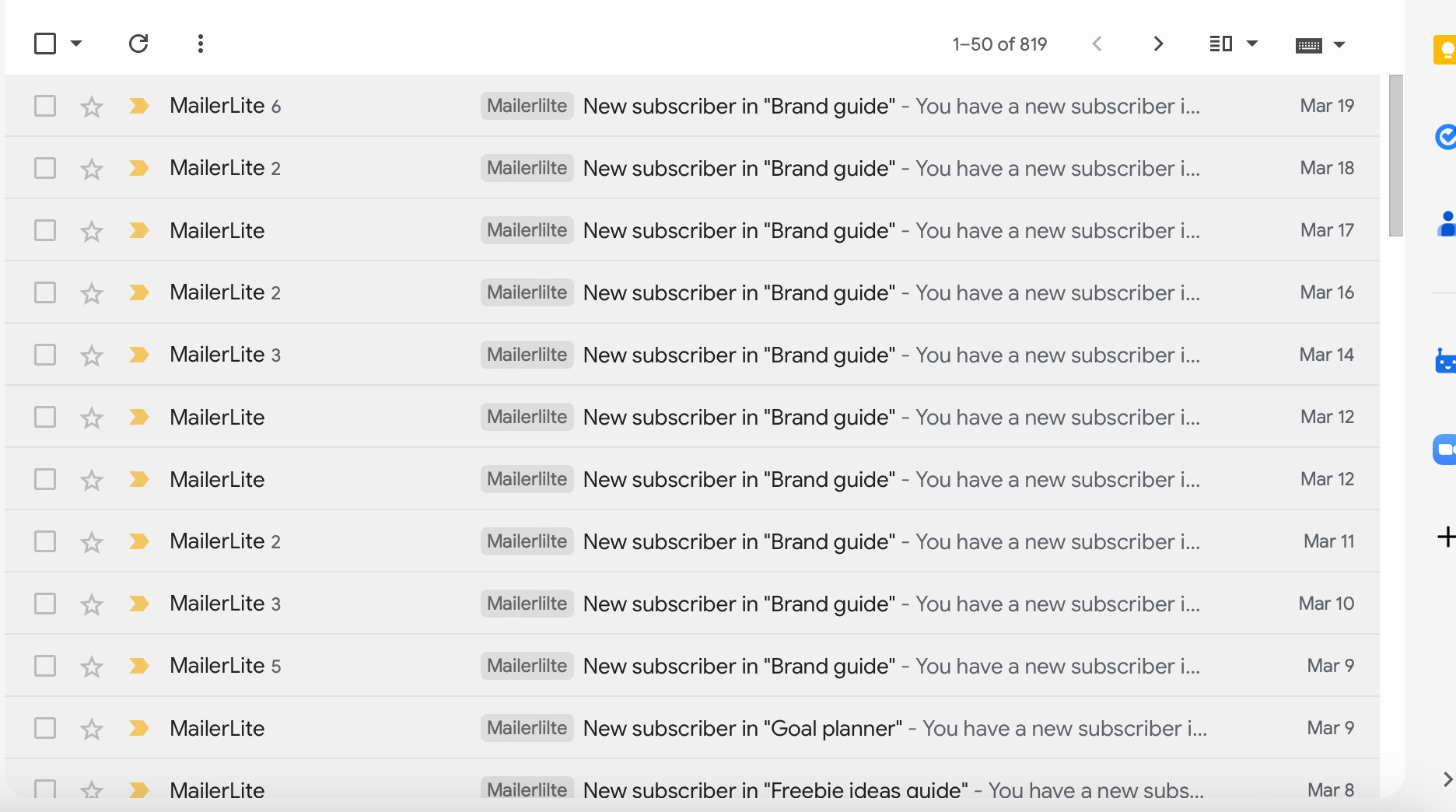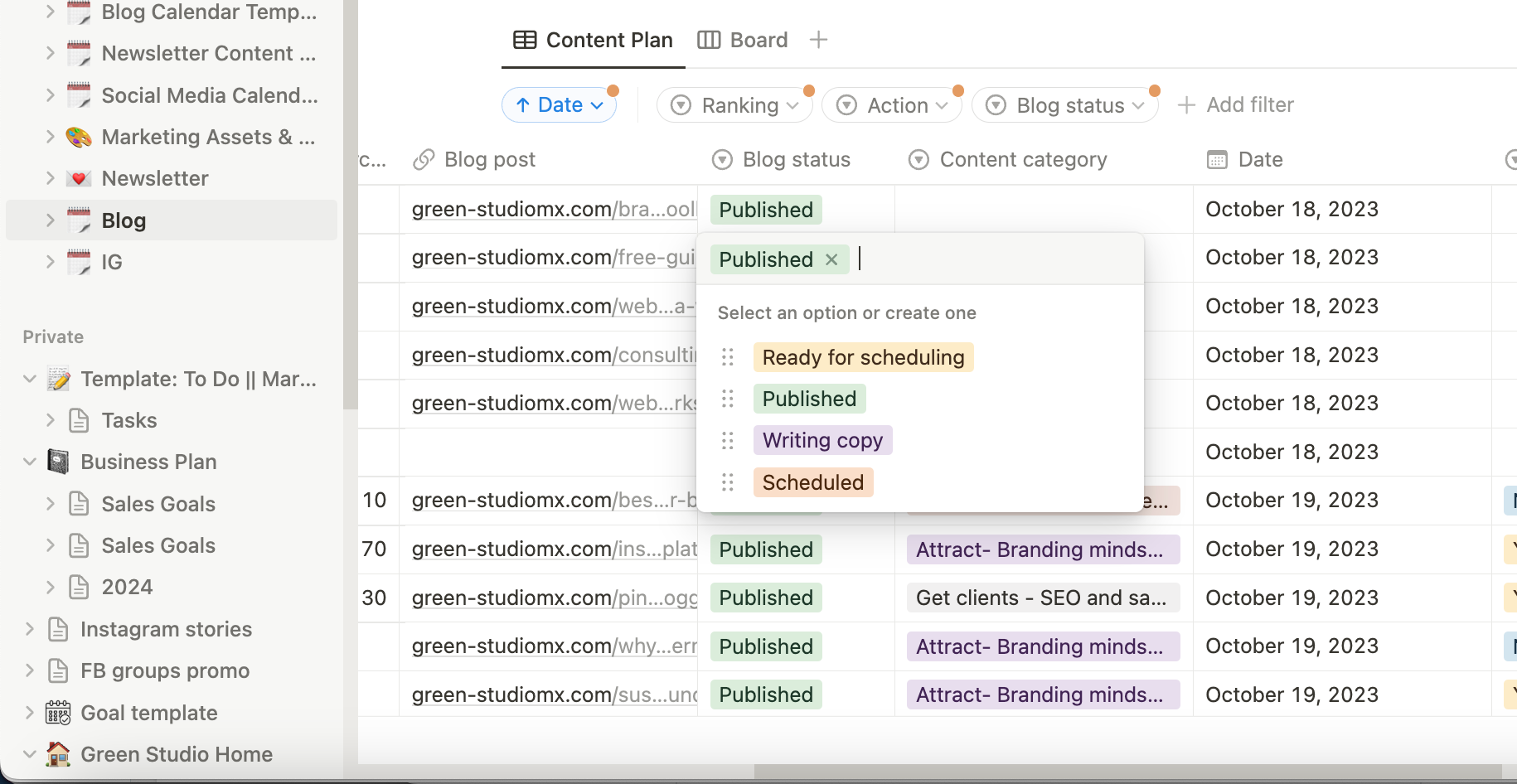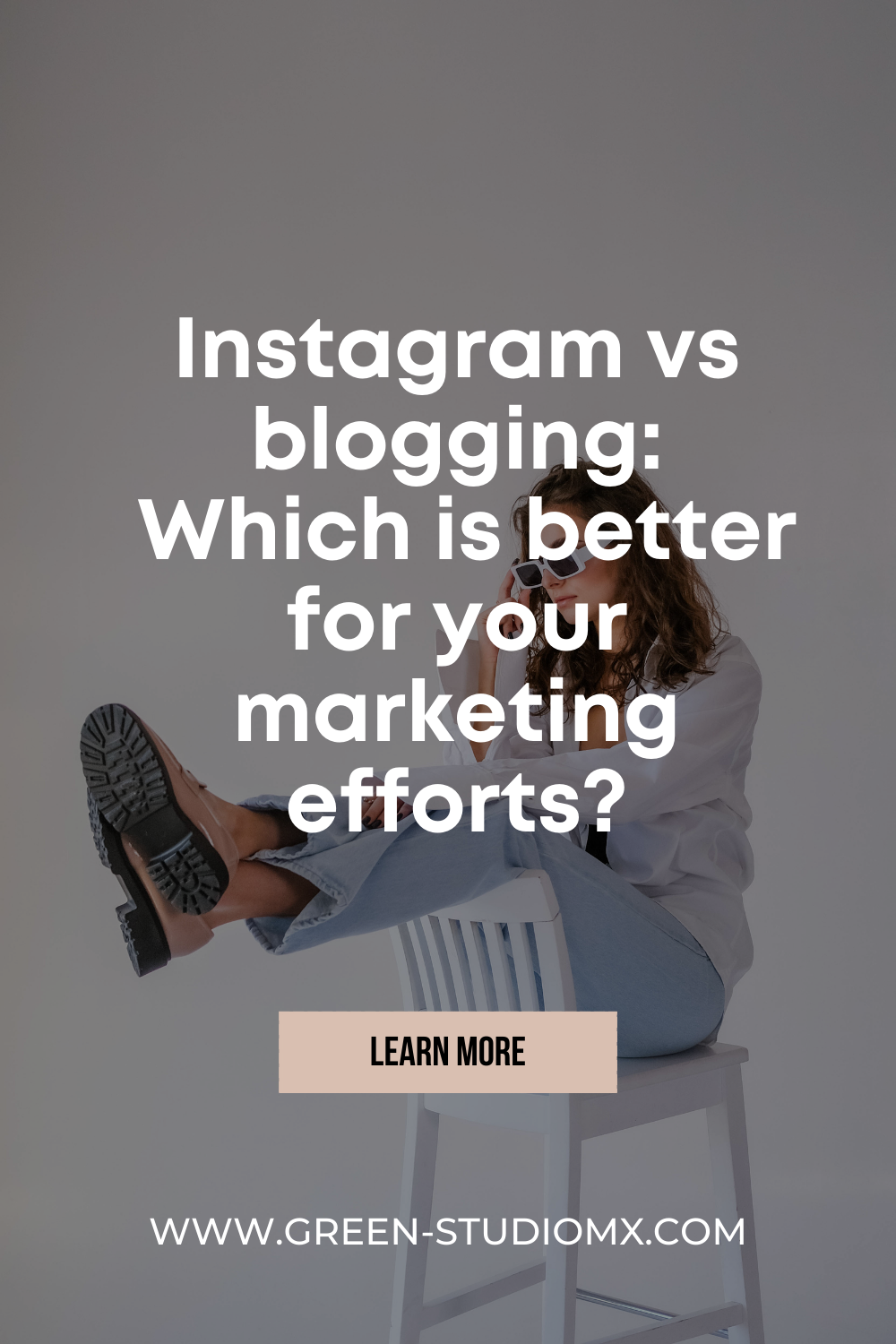Instagram vs blogging: Which is better for your marketing?
Welcome, your marketing dilemmas are over! If we haven't crossed paths before, allow me to introduce myself. I'm Natalia, the founder of Green Studio Marketing. My mission is to help industry leaders and online service providers discover their brand magic so they can change the world, one website at a time. I'm thrilled to have you here as we dive into the exciting world of Instagram vs blogging for your marketing strategy.
I understand the struggle of not knowing where to focus your marketing efforts, which platform to prioritize, and how to stay consistent with both Instagram and a blog without burning out. It can feel overwhelming, trust me I’ve felt the same way! In this blog post, I'll guide you through the pros and cons of each platform and help you determine the best approach for your marketing goals.
You might be thinking, Which is better, social media or blogging? or Can I use Instagram as my blog? These are valid questions, and I'm here to provide you with all the answers you need.
Which is better: Social media or blogging
Social media is undeniably popular and can be a fantastic way to connect with your audience. However, blogging brings its own set of benefits to the table. Picture this - with a well-crafted blog, you own your content, have complete control over your narrative, and can build a loyal audience that trusts your expertise. Plus, blogging can help you establish yourself as a thought leader in your industry. So, while social media and Instagram has its perks, don't underestimate the power of a well-maintained blog.
Can I use Instagram as my blog?
Instagram is primarily designed for visual content, making it perfect for showcasing your brand's personality and engaging with your community. However, relying solely on Instagram as a blog might not be the best idea. Instagram's limitations in terms of character count and formatting can hinder your ability to deliver in-depth content. Instead, consider using Instagram as a complementary platform to promote your blog posts and drive traffic to your website. It's all about finding that sweet spot between the two.
Can you have a successful blog without Instagram?
Absolutely! While Instagram can be a valuable addition to your marketing strategy, it's not the be-all and end-all. With a well-crafted blog, you can build a dedicated readership, boost your website's SEO, and establish yourself as an authority in your niche. By consistently delivering valuable content, engaging with your audience, and leveraging other marketing channels, you can thrive as a blogger without relying solely on Instagram.
I’ve been building my audience purely from my blog traffic and a lead generation strategy:

How to start a blog
- Pick a niche
- Organize your content categories
- Do effective keyword research
- Write your blogs
- Optimize them for SEO
- Share them
- Wait for traffic to kick in
- Re-asses your strategy every 3 months - 6 months
- Re-optimize underperforming blogs
- Rinse & repeat
How to repurpose your blog content into your social media content easily
This is where things get exciting! Instead of reinventing the wheel for every social media post, you can repurpose your blog content to create engaging and shareable social media content. Think snippets, quotes, visuals, and teasers that entice your audience to click through to your blog. By repurposing your blog content, you not only save time and effort but also maximize the impact of your content across different platforms.
I like to turn my best performing blog posts into carousels or use some of the copy from my blog for reels.
How to batch produce your blogs
Do you find yourself scrambling to produce blog posts on a regular basis? It's time to introduce a game-changing strategy - batch producing your blogs. By setting aside dedicated time to create multiple posts in one go, you can streamline your workflow and ensure a consistent flow of fresh content. Trust me, batching will be your new best friend, saving you from the stress of last-minute writing marathons.
For example, your content batching process can look like this:
- You create 2 or 4 blogs per month
- You plan 4 weekly newsletters with that content
- You plan 3-5 weekly social media content with the same theme
Now you can set aside one day per week to work on your upcoming content (ideally months in advance) or you can block one entire week to batch produce more months of content in advance.
Whatever works best for you, I have a dedicated hour per week to organize my content batching of my upcoming content and it looks like this:
- For my blogs I plan 3 months ahead of time
- For my newsletters the same
- Once I have a 3+ month content theme calendar, then I do my monthly social media content on my own by batching either a month or a week, depending on how much client work I have
The secret ingredient that helps me stay consistent though, is having a crystal clear picture of this batching system and amazon Notion content planners to keep track of what needs to be produced, planned, or scheduled.

Congrats the Instagram vs blogging debate is over and now you can pick the marketing method that works for you!
Related reads:
- How to start a blog for beginners
- How to find a website’s SEO keywords and what tools to use
- 100 profitable blogging niches
- How to use Pinterest to start driving traffic to your blog
- 6 ways to get clients without using social media
- Your dilemma answered: Organic vs paid traffic

* AI Disclosure: This content may contain sections generated with AI with the purpose of providing you with condensed helpful and relevant content, however all personal opinions are 100% human made as well as the blog post structure, outline and key takeaways.
* Affiliate Disclosure: Some of the links on www.nataliamaganda.com may contain affiliate links meaning that I will get a commission for recommending products at no extra cost to you.

hello! i'm natalia
Latina, web design expert for mental health professionals.
I help ambitious life coaches, therapists and holistic leaders amplify their magic, gain visibility, and simplify their marketing efforts through strategic web design and content.










